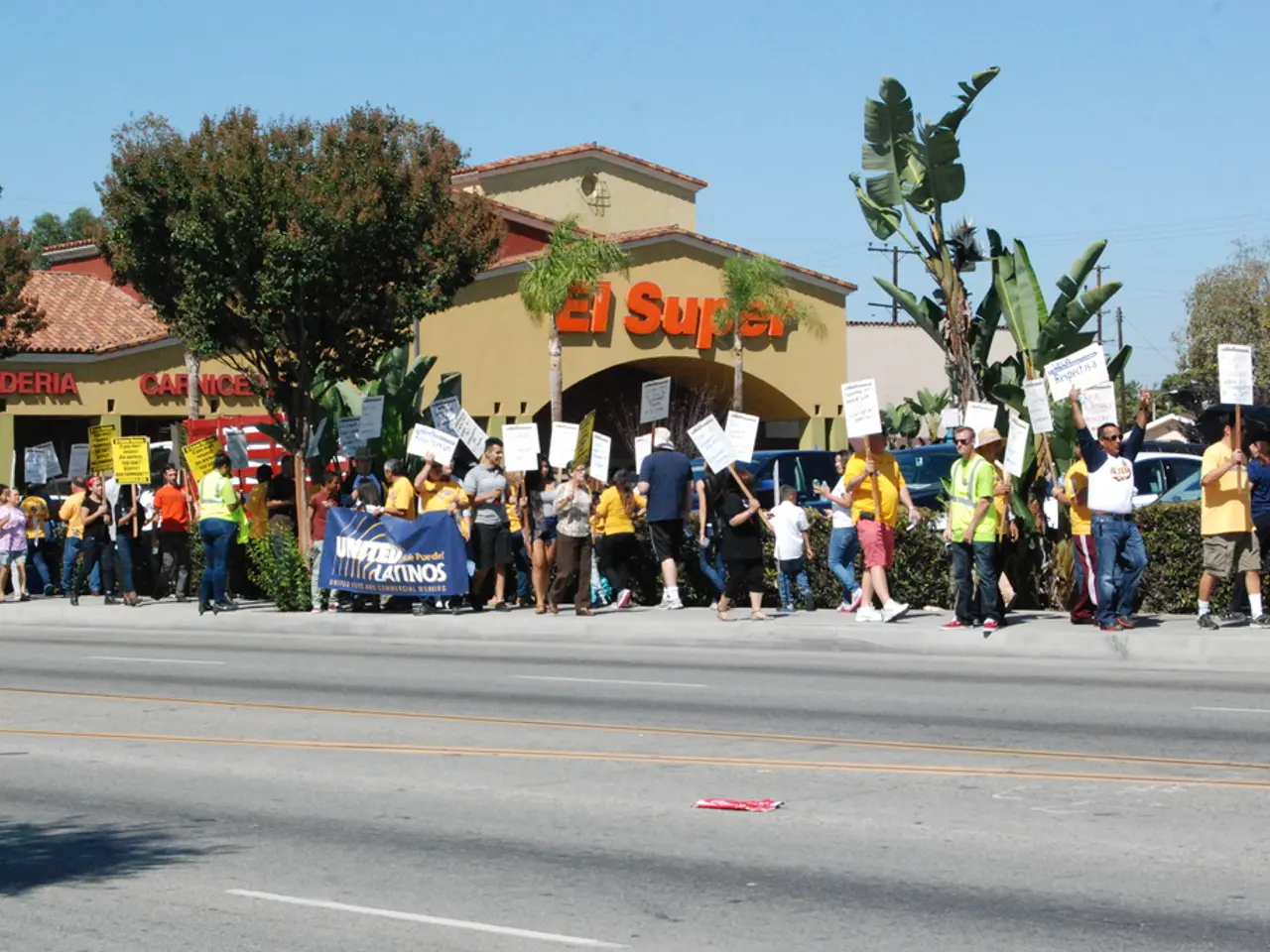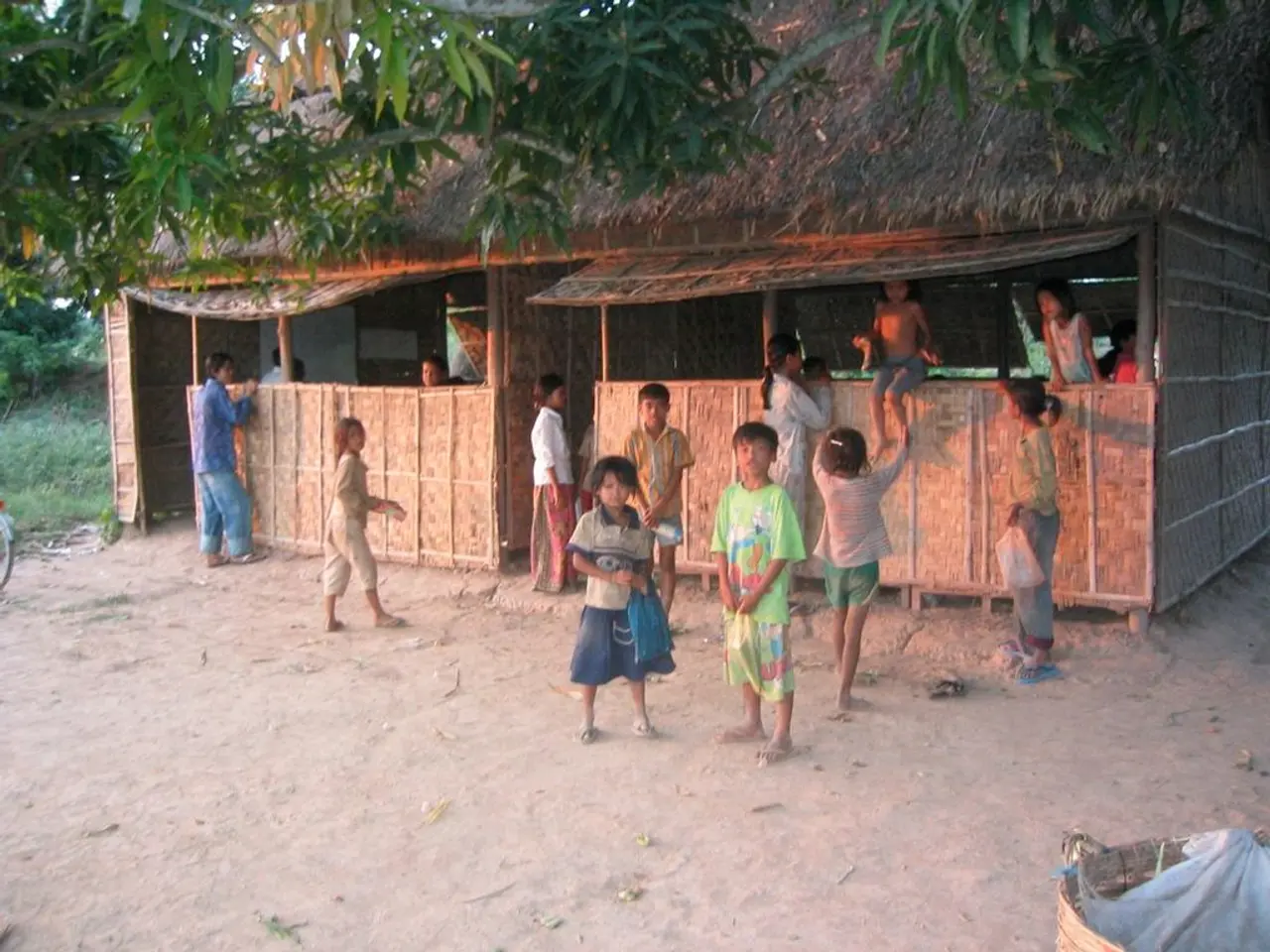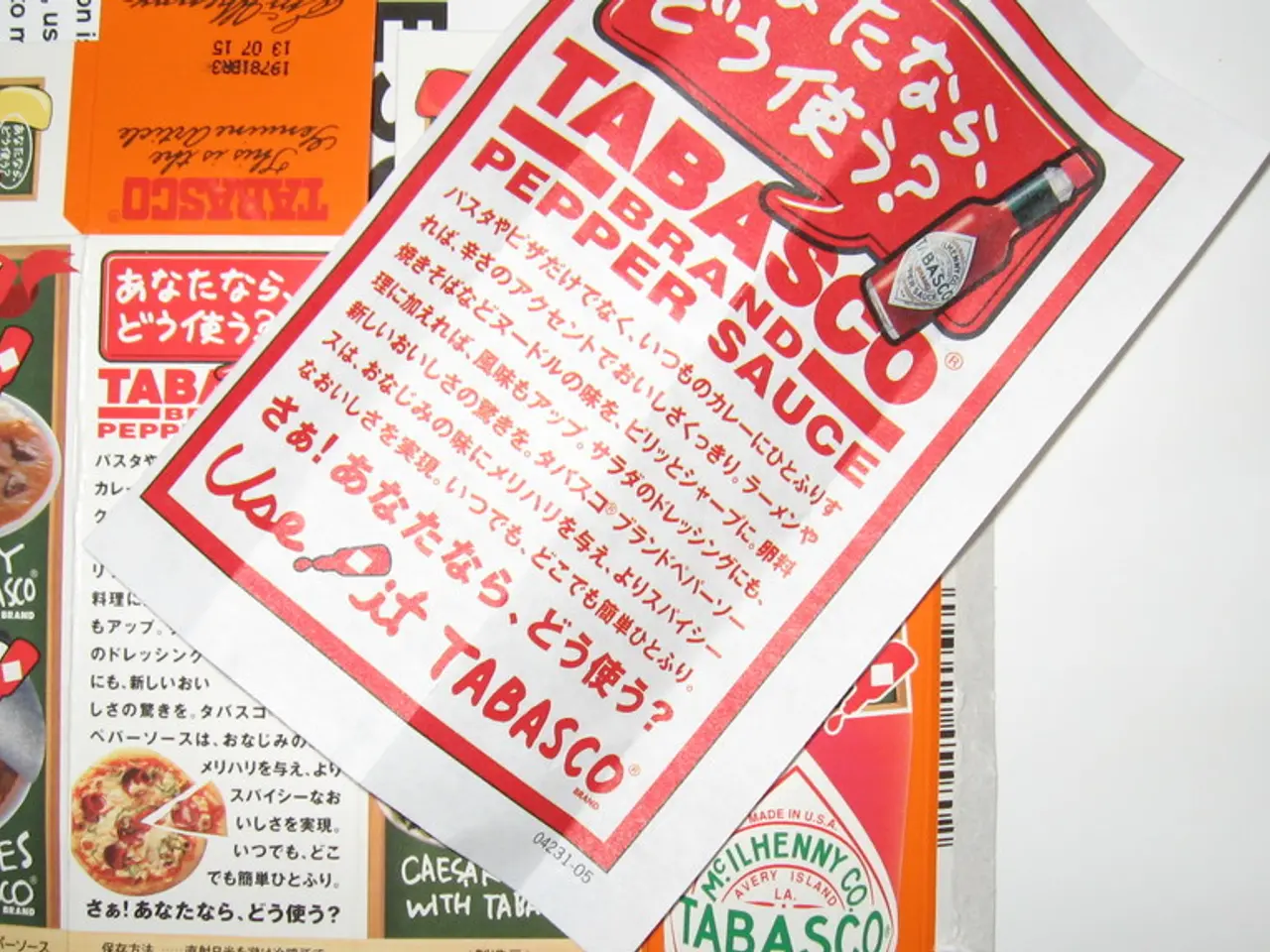Trump issues threat of imposing 25% customs duties on Indian traded goods, potentially causing tension with the Indian government in New Delhi
The US-India trade relationship, once promising, has taken a turn for the worse in mid-2025. The US has imposed a 25% tariff on most Indian goods, effective from August 7, 2025, causing a significant disruption in key sectors such as pharmaceuticals, electronics, textiles, and jewelry [1][2][4].
The tariffs, justified under national security and unfair trade practices, threaten to severely impact India's exports, placing the country at a competitive disadvantage compared to regional peers with lower US tariffs, such as Japan, South Korea, and Vietnam [2]. India is the largest exporter of generic drugs to the US, supplying 50% of its generics, and a major supplier of electronics, accounting for 44% of US iPhone imports in Q2 2025 [2].
The US argues that India is one of the highest-tariffed nations globally and that the tariffs are designed to balance trade deficits and protect American industries [3]. India, however, has responded diplomatically, seeking trade negotiations and planning a Bilateral Trade Agreement aimed at boosting trade from $210 billion in 2024 to $500 billion by 2030 [3].
India has also preemptively cut tariffs on some US goods and announced initiatives to incentivize bilateral trade [3]. Yet, the blanket 25% tariff without exemptions remains one of the toughest US trade actions against India, straining trade diplomacy and creating economic challenges for India’s export sectors [1][4].
The US-India trade talks had high hopes for a deal, but the current state of affairs has strained the relationship and disrupted key Indian exports to the US market. India faces a potential loss of export competitiveness and economic pressure in vital sectors, while the US aims to protect domestic industries and address trade imbalances but risks complicating strategic ties with India [1][2][3][4].
Meanwhile, the US-China trade relationship is also undergoing changes, with China pivoting away from consumer subsidy efforts and toward combating deflation and price wars [5]. The US-Mexico trade talks have been extended for another 90 days [6], and the US President Donald Trump has threatened India with 25% tariffs starting from Friday [7].
Elsewhere, the US Middle East envoy, Steve Witkoff, is set to travel to Gaza on Friday [8], and the adoptive parents of a baby born through IVF in the 1990s donated the embryo to an embryo "adoption agency" and it was implanted in a different family, making the baby a sibling to a 30-year-old sister [9].
The rift between the US and Brazil is deepening, with Trump imposing 50% tariffs on Brazil following his threat to retaliate against Brazil's prosecution of his ally, former President Jair Bolsonaro [10]. The US has also extended negotiations with Mexico for another 90 days [6].
India was one of the first countries to begin US trade talks, but the current state of the relationship suggests a more assertive phase in India's global economic engagement [11]. Furthermore, Trump is using trade to gain leverage on other issues, such as Canada's plans to recognize a Palestinian state [12].
References: 1. The Hindu 2. Bloomberg 3. Reuters 4. The Economic Times 5. CNBC 6. CNN 7. BBC 8. Al Jazeera 9. The Guardian 10. Reuters 11. The Economic Times 12. CBC
- The trade conflict between the US and India, as demonstrated by the 25% tariff imposed on most Indian goods, showcases how politics and policy-and-legislation impact war-and-conflicts in the realm of international trade, with India seeking trade negotiations to boost trade and alleviate economic stress.
- As the US imposes tariffs on India, China, and Brazil, it is clear that politics and trade policies are intertwined with general news, as economic exchanges often have far-reaching effects on strategic ties, economic well-being, and even family structures (such as the embryo adoption case revealed by The Guardian).








